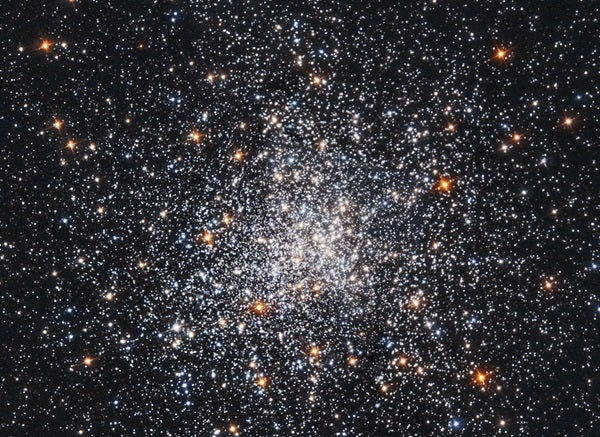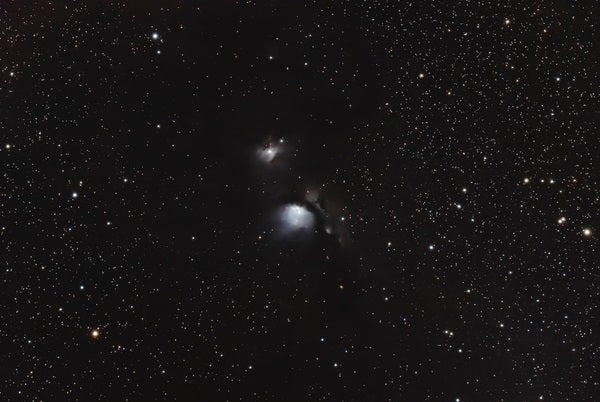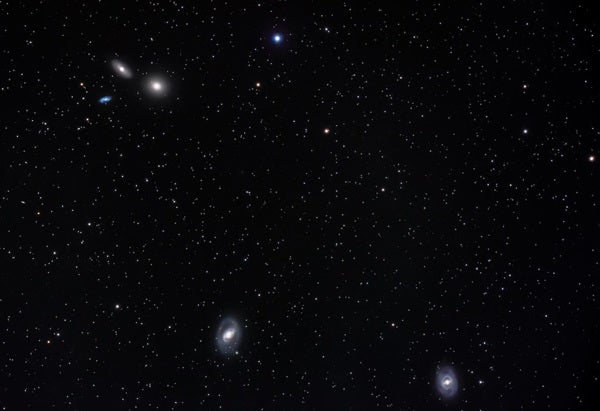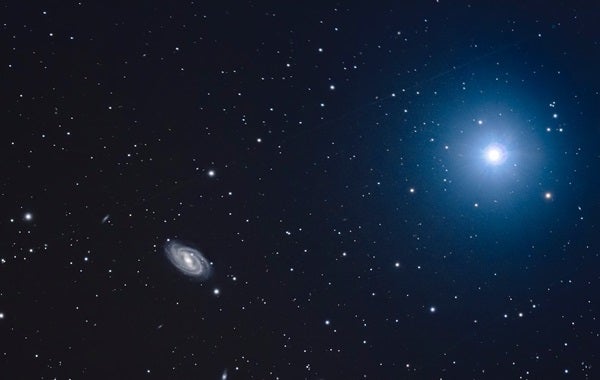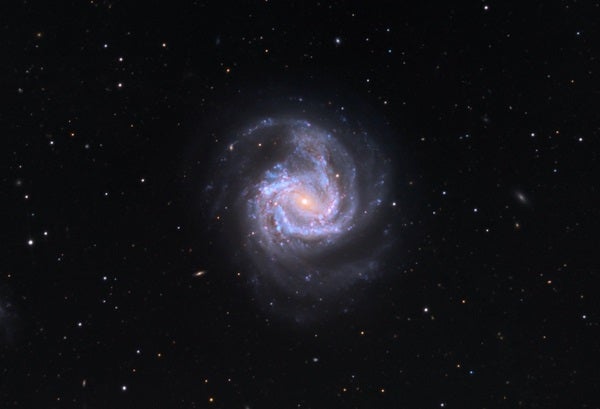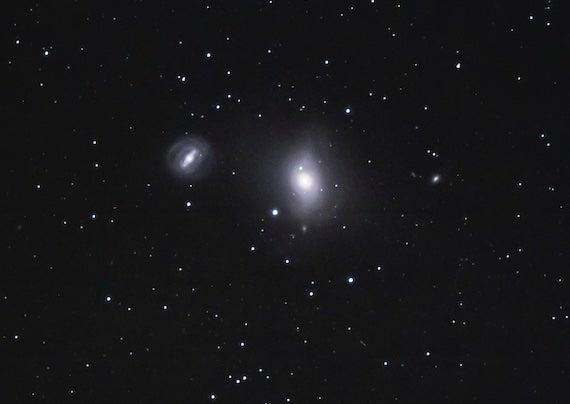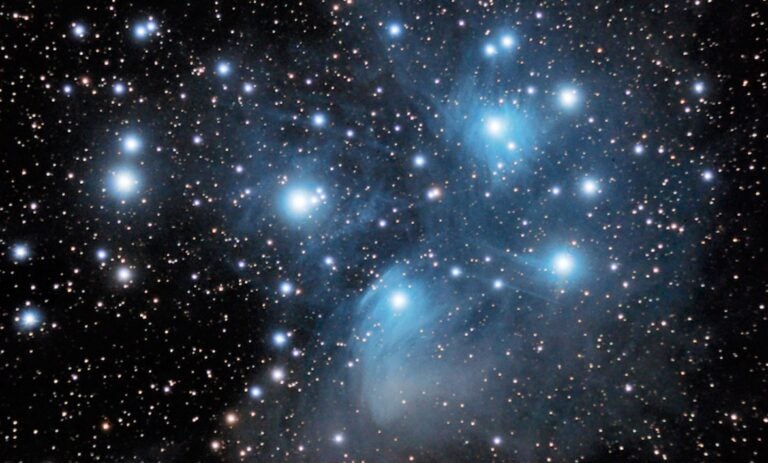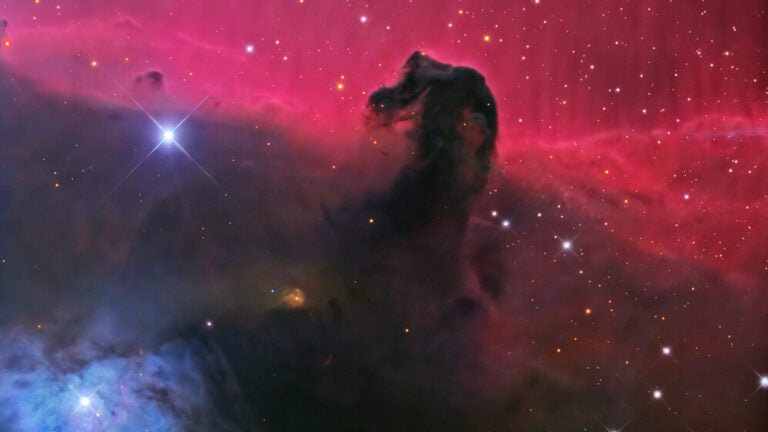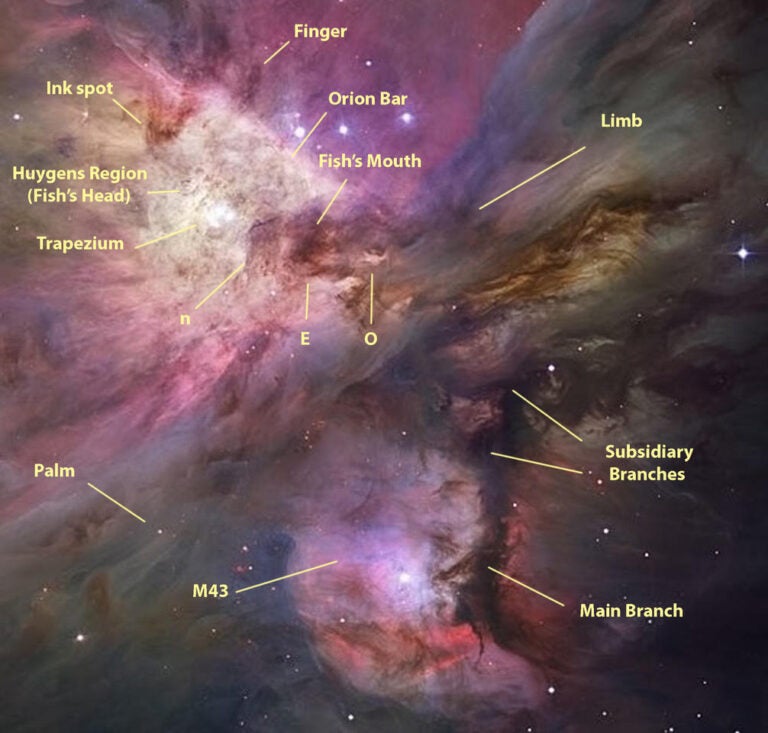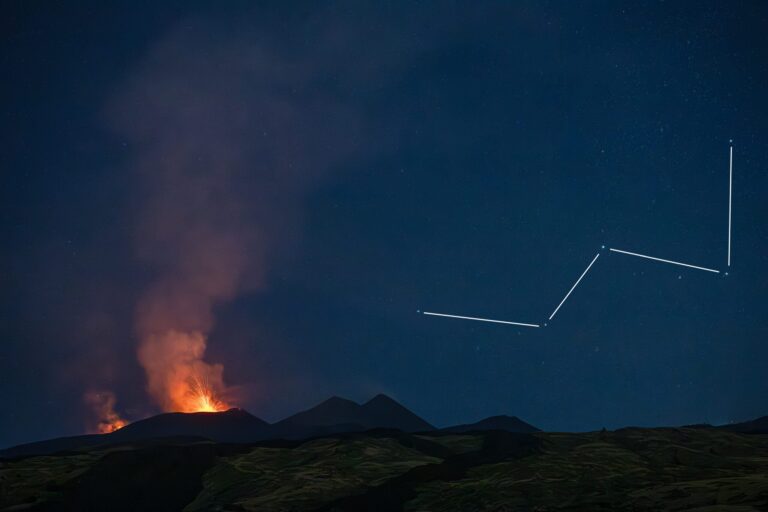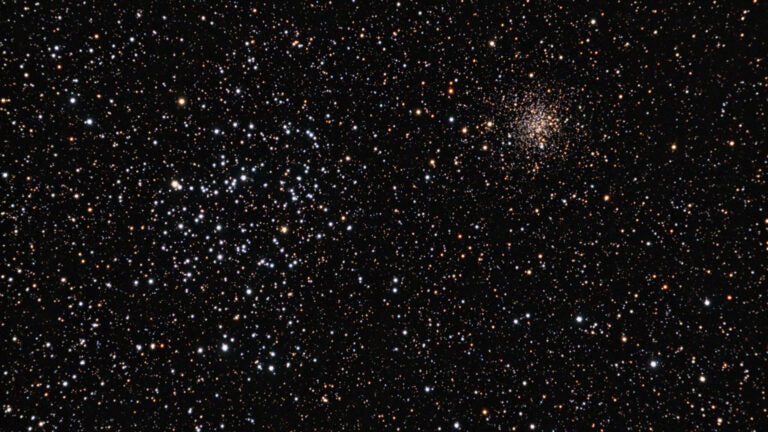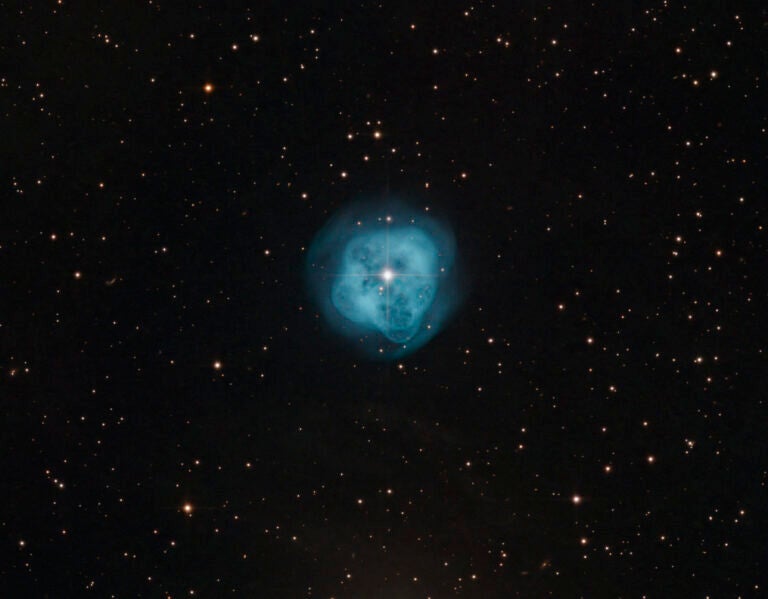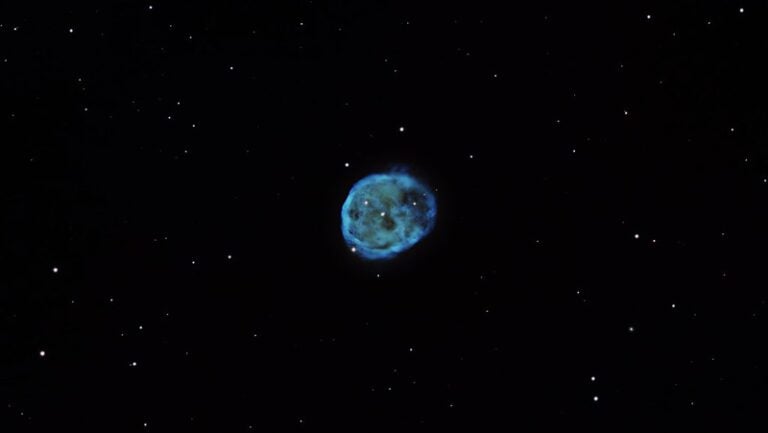As backyard observers may know, some modest telescopes lack the optics or aperture to cleanly resolve deep-sky objects like nebulae, star clusters, and galaxies. This leads to fuzzy images, often making it difficult to characterize exactly what you’re looking at. That’s why French comet-hunter Charles Messier documented 109 deep-sky objects that, through his small scope, appeared to be masquerading as comets, despite the fact they didn’t move against the starry background sky.
A brief window exists from mid-March to early April when observers in the Northern Hemisphere can catch all of Messier’s objects, which are unevenly spread across the sky, in a single night. This feat is called a Messier marathon, and astronomy clubs around the world have been hosting events to celebrate the celestial race since the 1980s.
But what if you can’t devote a whole night to the hunt? Then you should try running a Messier mini-marathon, where you target a subset of Messier objects between the end of twilight and midnight. So far, I’ve done Messier mini-marathons for spring (April 2021 issue), summer (August 2021), and autumn (October 2022). Here’s the fourth: Winter is coming.
To carry out this mini-marathon, begin with the first object on the list. It resides farthest west, so the following objects will set one after another, in order, saving you search time.
In 2023, the Moon is New on Jan. 21 and Feb. 20, so your first observing window runs from around Jan. 14 to Jan. 23. After that, moonlight will interfere with your search until Last Quarter, which occurs Feb. 13. Then the sky will stay Moon-free until after midnight each night for another week, marking your second observing window.
So set up your scope, kick back, and enjoy the last of the mini-marathons!
Under the sky
We’ll start with globular cluster M79 in Lepus, which lies south of Orion. To spot M79 — the most southerly Messier object in the winter sky — draw a line from Alpha (α) through Beta (β) Leporis and extend it just slightly more than the distance between those two stars. For all of its magnitude 7.8 brightness, M79 is difficult to resolve through small scopes. A 10-inch instrument shows that the 8.7′-wide globular has a bright, broad core. But crank up the magnification beyond 200x, and you’ll resolve scores of stars at the cluster’s edges.
Next up is M78 in Orion. Although it’s the sky’s brightest reflection nebula (magnitude 8.3), you’ll still need a dark site to see it well. Through a 4-inch scope at about 120x, you’ll spot an 11th-magnitude star with the two densest parts of M78 on either side of it. The nebula measures 8′ by 6′ and lies in a region with only a few background stars.
Our third target is barred spiral galaxy M95 in Leo. It glows at magnitude 9.7 and spans 7.8′ by 4.6′. You’ll find it 3.6° northeast of Rho (ρ) Leonis. Through an 8-inch scope, M95 appears slightly elongated in a north-northeast to south-southwest orientation. The small core has a faint outer ring that marks the brightest parts of M95’s arms. You’ll see the bar through a 16-inch or larger scope at high power. It stretches from one side of the ring to the other.
Spiral galaxy M96 travels through space with M95 and lies just 0.7° west of it. At magnitude 9.2, this is one of the sky’s brightest galaxies. Through a 4-inch scope, you’ll see a bright, evenly illuminated oval (4′ by 3′) stretching northwest to southeast. There’s not much detail to see here, except for a slightly brighter tiny core.
You won’t need to move your scope much for elliptical galaxy M105, which lies only 0.8° north-northeast of M96. It glows at magnitude 9.3 and has a diameter of 3.9′. M105 has a bright central region surrounded by a halo with an edge that’s difficult to define.
Our next target is barred spiral M108 in Ursa Major. It glows at magnitude 10.0. Although not exactly a galactic “needle,” it is four times as long as it is wide (8.1′ by 2.1′), tilting east-northeastward. Look for it 1.5° east of Merak (Beta Ursae Majoris). Oh, and don’t be fooled by the 12th-magnitude star that lies between us and M108’s core: It’s not a supernova.
Now move to Leo and draw a line from Chertan (Theta [θ] Leonis) to Iota (ι) Leonis. At its midpoint, you’ll find the terrific spiral M65. This galaxy belongs to the Leo Triplet — a triangular group that fits into a field of view 0.6° across. The other members are M66 and NGC 3628. M95 measures 8.7′ by 2.2′ and glows at magnitude 9.3. Look carefully to see some mottling north and south of the galaxy’s broad core.
From M65, move only 0.3° east-southeast to find an even brighter celestial wonder, spiral M66. Glowing at magnitude 8.9, it looks a bit hazy, although it has a well-defined edge. It’s twice as long as it is wide (8.2′ by 3.9′) and stretches north to south. The bright core really stands out, but you’ll need a 12-inch scope at 200x to see even a hint of the spiral arms.
Next, head back to Ursa Major for barred spiral M109. This galaxy glows at magnitude 9.8 and measures 7.6′ by 4.3′. To find it, first center Phecda (Gamma [γ] Ursae Majoris) in your telescope. Then move 0.6° to the east-southeast. Although M109 has a low surface brightness, an 8-inch scope under superb conditions will reveal the bar. I recommend using magnification of 200x or greater.
Our next two targets, M98 (magnitude 10.1) and M99 (magnitude 9.9), are both spiral galaxies and lie in Coma Berenices. The easiest way to find them is to head 7.2° east of Denebola (Beta Leonis), where you’ll find M98. From there it’s just a short jump 1.3° east-southeast to reach M99. Through an 8-inch scope at 200x, M98 appears as a fat spindle nearly four times as long as it is wide (9.5′ by 2.5′). The core is broad and slightly brighter than the arms.
M99 appears nearly circular (5.2′ by 4.6′), but it looks weird. In fact, even through a 10-inch scope, M99 appears to have only one spiral arm, which winds under the face-on galaxy’s southern edge. This arm appears brighter than the other because it’s full of large star-forming regions, which you’ll recognize as the bright clumpy areas.
Now we move to the small constellation Canes Venatici for spiral M106. This great target glows at magnitude 8.4 and measures 20′ by 8′. M106 has a tilt to our line of sight similar to the Andromeda Galaxy (M31), so the features the two galaxies showcase share a resemblance. M106 makes a triangle with Chi (χ) Ursae Majoris and Phecda; it lies 5.5° east of Chi and 7.5° southeast of Phecda. You’ll first see a bright core surrounded by an oval haze. Inside the haze is a stretched-out inner disk that’s a third of the galaxy’s size. Through a 10-inch or larger telescope, you’ll begin to see the mottled texture and spiral structure. The strikingly linear northern arm appears more pronounced, while the southern arm looks more diffuse.
To find our next target, spiral galaxy M61, first locate the stars 16 and 17 Virginis. Their magnitudes are 5.0 and 6.5, respectively. M61 lies between them, just a bit closer to 17 Vir. It glows at magnitude 9.7 and measures 6.0′ by 5.5′. M61’s arms wind tightly around its core. Through a 12-inch scope, you’ll see their stubby extensions.
At magnitude 9.3, spiral M100 in Coma Berenices ranks as one of the brightest galaxies in the Coma-Virgo cluster, and it’s a great target for amateur telescopes. It lies 8.3° east of Denebola, or 1.9° east-northeast of the magnitude 5.1 star 6 Comae Berenices. The galaxy measures 6.2′ by 5.6′. Through an 8-inch scope, you won’t see M100’s arms until you crank the magnification up above 200x, and then you’ll still only get good views on the best nights. The arms appear as brighter regions east and west of the nucleus.
While the inclusion of M40, also known as Winnecke 4, may seem to merit an apology, this clunker is indeed an entry in Messier’s catalog — though perhaps the oddest one. This object is a widely spaced optical double star in Ursa Major, 1.4° northeast of Megrez (Delta [δ] Ursae Majoris). The components glow at magnitudes 9.0 and 9.6, and their separation is nearly an arcminute (53″). The primary appears light yellow, while the secondary is a deep yellow, although many observers see it as pale orange. Despite its relatively dull nature, M40 deserves at least a quick look.
It’s easy to confuse M84 with nearby M86. Both are ellipticals in Virgo that lie midway between Denebola and Vindemiatrix (Epsilon [ε] Virginis), but M84 lies a bit more westerly. Also, M84 is smaller (5.1′ by 4.1′) and slightly fainter (magnitude 9.1). Its core is large and decidedly non-stellar, so watch for a faint halo that surrounds it.
And while you’re in the area, go ahead and observe M86, which lies only 0.3 from M84. It glows at magnitude 8.9 and measures 12′ by 9.3′. Even low-power eyepieces reveal this galaxy’s oval shape, so it’s more a lenticular than a spiral, although it’s still classified as the latter. Unlike many ellipticals, however, M86 has a tiny starlike core. High magnifications bring it out best.
Lenticular galaxy M85 in Coma Berenices looks like an edge-on spiral, but it doesn’t have a spiral galaxy’s arm structure. It glows at magnitude 9.1 and measures 7.5′ by 5.7′. To find it, first locate the magnitude 4.7 star 11 Comae Berenices. From there, head 1.2° east-northeast, and M85 will be in your field of view. A small scope shows a bright core surrounded by an oval halo. Through a 12-inch or larger instrument you’ll see this brightness difference as you move out from the galaxy’s center. You may also detect a subtle yellow color. That’s because this galaxy contains vast numbers of old yellow stars.
Next up is M49 in Virgo. This elliptical galaxy, located some 8.5° southwest of Vindemiatrix, glows relatively brightly at magnitude 8.4. It appears slightly oval, measuring 8.1′ by 7.1′. The core makes up the central two-thirds of this object, and a fainter outer region envelops it. If your seeing (a measure of the steadiness of the air) is good, crank up the power and look for M49’s outer halo.
Our final target, elliptical galaxy M87 in Virgo, is a colossal object, with a mass in excess of 3 trillion Suns and a diameter that may reach half a million light-years. It also has nearly 100 times as many globular clusters as the Milky Way. All that said, however, it probably won’t wow most observers. It glows at magnitude 8.6 and has an apparent diameter of 7.1′. The one feature you’ll definitely notice is its bright core, which spans about one-third of the galaxy’s overall size.
Practice patience
Spending time with each of these deep-sky wonders will pay dividends in the amount of detail you’ll see. Don’t worry about rushing out right away on a subpar night. Many of the objects on this list will linger high in the sky throughout most of the spring. And remember, the only rule for any marathon, mini or full, is to have fun!

